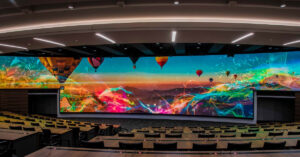
Video Building Block: Framerate
Published September 25, 2020

What is framerate?
Framerate for video is the number of frames displayed per second. Imagine it like how fast you flip through a cartoon flipbook but with actual, high resolution photographs.
Why is framerate important?
Each frame is a photograph captured and then played in succession to give the illusion of motion. Without frame rate, we wouldn’t have movies, television, or half the internet!
What are common framerates and where are they used?
| Framerate | Usage |
|---|---|
| 24 fps | Film/Cinema standard |
| 29.97 fps | Former Live TV/Sports broadcasting standard |
| 30 fps | Former Live TV/Sports recording standard |
| 59.93 fps | Current television broadcast standard |
| 60 fps | Current television recording standard |
| 120 fps | Minimum slow motion |
What does each frame rate look like?
All the framerates are perceived differently by the human eye. While 24 fps is said to be the most natural to the human eye, high frame rates can still be perceived with a crisper image without excessive motion blur. For example, move your hand slowly in front of your face. Now move your hand back and forth as quickly as possible. Are you able to decipher details when you’re moving your hand fast? Probably not. Our brain blurs the image it sees and we perceive it as motion. The same happens with film!
Watch this short video. See how the 15 ball looks choppy and the 120 ball bounces smoothly?
Why those numbers?
The original frame rate for the first silent films was around 24 fps. It wasn’t exact because the projectors were hand cranked to run the film through. When sound films arrived, framerate had to be automated as the human ear is much more attuned to changes in sound speed. You know how when you speed up a recording, your voice sounds like a chipmunk? Same thing!
As video recording technology advanced, consumer displays didn’t move as fast. Some people were watching on black and white televisions while others had color televisions. Broadcast engineers discovered 30 fps produced something called “dot crawl,” where certain analog televisions would have a crawling glitch. By reducing the frame rate by 1% (29.97, 59.93), they were able to avoid the dot crawl when broadcasting.
There have been several studies done to determine what frame rates the human eye can actually perceive. Like with most senses, it varies depending on the person. On average people can perceive differences in quality up to 45 fps, with elderly and visually impaired only around 24 fps. This helped lead to the rise in popularity of 60 fps.
What happens if framerates don’t match?
If framerates on the source and display don’t match, you’re going to have visual failure. Depending on the device and the options available on it, you may need to incorporate a hardware or software converter to properly play one frame rate at another frame rate. Converting a lower rate to a higher rate can cause visual issues.
For example, when you convert 24 fps to 60 fps, you have 36 more frames to fill for which there are no recorded images. That means you have to repeat 36 images, which makes any motion choppy and unappealing. It’s much easier to convert a higher frame rate to a lower one without losing any perceived quality.
Just for Fun
Here’s a video of a sprinkler going off at 100,000 fps!
Sources:
- https://en.wikipedia.org/wiki/Frame_rate
- https://www.ncbi.nlm.nih.gov/pmc/articles/PMC2826883/
- http://www.100fps.com/how_many_frames_can_humans_see.htm
Want to get these articles a week in advance with extra deals and news? Sign up for our weekly newsletter, the Archer’s Quiver!
Get Expert AV Assistance
Latest Blogs
About Arrow AV Group
We are a premiere audiovisual integration firm serving corporate, government, healthcare, house of worship, and education markets with easy-to-use solutions that drive success. Family-owned and operated from Appleton, WI for over 35 years.




